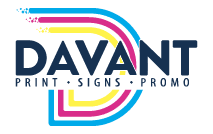When designing projects, many of us have fallen prey to the belief that the content itself is more important than how it looks. We skip over decisions about font and typography, often settling on whatever is easiest, in order to focus on the actual material and content of our project. However, choices about font and font size affect who will read our projects. The font we choose can make or break a project, as the typography we choose is what brings our words to life. Font choices affect how our content is received by our audiences, establishes a mood and tone for our project, and even communicates impressions about our brands and businesses.
Every decision made about fonts should be focused on drawing the reader in and reinforcing your brand image. However, those decisions can easily become overwhelming with the thousands of font options. If you’re feeling overwhelmed about how to choose the right font for your project, you’ve come to the right place!
All About Fonts
In order to understand how to pick the best font for your project, it’s important to know some background information about the fonts themselves. There are four basic font families: serif, sans serif, display, and script. Most serif fonts are more traditional and formal as they have small elements, often called “flags”, across most of the letters. These fonts are generally used for body text, but at small sizes they can have disastrous effects on readability. Sans serif fonts are more modern and minimalist, as they lack the small connecting elements. The letters of sans serif are more rounded or straight, which can make them useful for titles and subheadings.
Display fonts are intended to be used at large sizes in headings and titles as they have more variable and eccentric designs that, while they look fun, are not good for readability. Script fonts resemble calligraphy or handwriting and are also meant to be used for short blocks of text such as headlines and titles. Having this information in mind will help you decide whether to use a display or script font for your titles and a serif or sans serif font for the body of your project.
Choosing a Font
Every project you will ever work on has a mood, and font and font size can have a serious impact on that mood. Every typeface has its own mood that can either reinforce or completely derail the mood of your project. A curly font with hearts over the I’s wouldn’t be appropriate for a law firm but would be well-suited for projects geared towards young girls. When choosing a font, be sure to consider the message of the project and how each font affects that message.
It’s also important to consider at what distance you’re expecting people to view your project, as readability will affect the success of your font choices. Not every font looks good at every weight and size; trying to read small display fonts from a distance is impossible, and sans serif fonts sometimes look boring and plain at large sizes. Be sure to test all the fonts you’re considering to determine how viewing them at different sizes affects both readability and the overall mood of your project.
Font Size
Once you’ve selected fonts for your project, it’s time to decide what size you want each font to appear. Font size has a huge effect on user experience, especially if that choice makes your project impossible to read. A major factor in this decision is your intended audience: if they are likely to be wearing glasses, it’s probably not a good idea to use a small font for the entirety of the project. The size of your fonts needs to be large enough that your intended audience can read the text without having to strain their eyes.
For printed projects, there is a range of font sizes that can be used to maximize reader experience: big blocks of text should be printed in 10-14 point size, while headlines can range anywhere from 18-28 point, depending on how much attention you want to draw. Sometimes sticking with primarily large fonts can keep the reader’s attention for longer, as their eyes are drawn to the bigger letters.
Another factor that affects your font size decisions is also the type of project, as font size for business cards won’t translate well to banners or posters. When selecting a font size, it is vital to consider under what conditions the text is read. It is recommended to view your printed project at 100% scale on a screen prior to printing to confirm that your fonts will be legible under expected viewing conditions.
Davant Printing
Our staff here at Davant has a long history of helping creators bring their projects to life. If you are unsure what font and font size is best for your project, Davant is here to help! We are here to assist you in every phase of your project, from design all the way to printing. Visit our website today to find out more about how Davant can help you with your project.
Photo Credit: https://www.pexels.com/photo/quote-calligraphy-under-cup-of-lemon-tea-688668/

